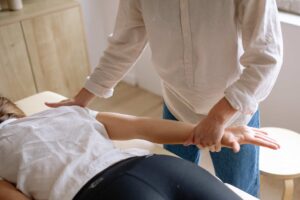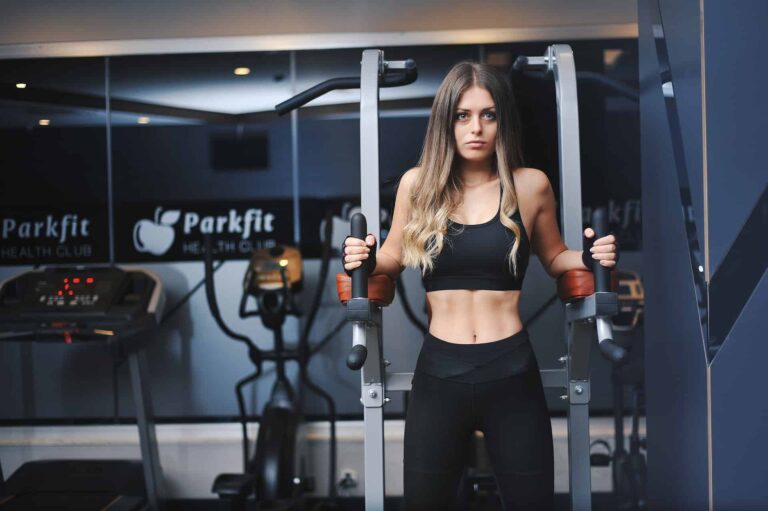Call us now:

Are you looking to maximize your recovery and get back to your normal life faster? Physiotherapy is an effective way to help your body heal after injury or illness.
In this article, we’ll explore the top 10 physiotherapy techniques that can help you achieve faster and more effective rehabilitation. From transcutaneous electrical nerve stimulation and ultrasound therapy, to massage and exercise, these techniques can help you speed up your recovery and get back to living life to the fullest.
So let’s dive in and learn about these effective physiotherapy techniques and how they can help you on your road to recovery.
Transcutaneous Electrical Nerve Stimulation (TENS)
TENS is a great way to help you on your rehabilitation journey! It may provide relief from pain and improve your mobility.
It is a form of electrical stimulation that can be used to target specific areas of the body. It is often combined with massage, heat therapy, and trigger point therapy to better target affected areas.
By applying mild electrical current to the affected area, TENS can help to reduce inflammation, improve circulation, and relax muscles, all of which can help to reduce pain and improve mobility.
TENS can also be used to provide relief from muscle spasms, as well as to reduce the intensity of chronic pain.
Combined with a comprehensive treatment plan, TENS can be an effective treatment option for those looking to maximize their recovery and get back to their daily activities.
Ultrasound Therapy
Ultrasound therapy is like a deep massage, vibrating deep into the muscles to help soothe and relax them. This type of hydrotherapy uses sound waves to penetrate deep into muscle and tissue, providing a unique form of biofeedback that helps to reduce inflammation, relax muscles, and increase circulation.
Ultrasound therapy is a non-invasive procedure that can help reduce pain and promote healing in a variety of conditions. It can be used to treat pain in the joints, muscles, and tendons, as well as to reduce muscle spasms, reduce swelling, and improve circulation. It is also used to help reduce the effects of arthritis and other chronic conditions.
Ultrasound therapy can be used in combination with other therapies, such as physical therapy, to maximize recovery and reduce pain. It can also be used in conjunction with other forms of therapy, such as massage, to help promote healing and relaxation.
Ultrasound therapy is an effective way to help you reach your goals of faster rehabilitation and improved overall health.
Massage Therapy
Massage therapy is a great way to reduce pain and tension in the body, helping you to feel more relaxed and comfortable. It is one of the oldest forms of physical therapy and is often used in conjunction with other treatments, such as physical therapy and exercise.
Massage therapy can also be used to improve circulation and reduce stress. Acupressure massage is a type of massage that uses pressure points to treat various conditions. This type of massage is used to relieve muscle tension and improve circulation.
Hydrotherapy massage is a type of massage that uses warm water to help relax the body. This massage is often used to reduce pain, improve range of motion, and reduce muscle spasms.
Massage therapy can also be used to reduce anxiety and improve sleep quality. It can also help to reduce the symptoms of depression, reduce fatigue, and improve overall physical and mental wellbeing.
By taking advantage of massage therapy, you can experience a number of benefits that can help you to reach your rehabilitation goals.
Exercise Therapy
Exercise therapy can be a great way to help you feel more relaxed and improve your overall physical and mental wellbeing! Hydrotherapy, joint mobilization, and other forms of exercise can help you get back on track to feeling your best.
Exercise therapy can help you build strength, improve flexibility, and increase endurance, all of which can help you recover from an injury or ailment faster. Here are a few ways that exercise therapy can help you maximize your recovery:
- Increase your range of motion in the affected area
- Strengthen the muscles around the affected area
- Improve circulation
- Reduce pain and inflammation
- Improve balance and coordination
- Increase overall physical fitness and well-being.
Cold Therapy
Cold therapy can be a great way to reduce swelling and relieve pain, so you can start feeling better quickly!
Ice packs and hydrotherapy are two of the most popular forms of cold therapy. Ice packs can be placed on the affected area to help reduce inflammation and reduce pain. Hydrotherapy, which involves soaking in cold water, can also be beneficial for reducing inflammation and pain.
Cold therapy can help to reduce swelling and pain quickly, allowing you to get back to your regular activities as soon as possible. If you’re looking for an effective way to reduce swelling and pain, cold therapy is a great choice.
Not only will it help to reduce inflammation and pain, but it can also help to speed up the healing process. Cold therapy can be used as a stand-alone treatment, or as part of a comprehensive rehabilitation program. So, if you want to speed up your recovery and get back to doing what you love, cold therapy can be a great option.
Conclusion
You’ve seen the top 10 physiotherapy techniques for effective rehabilitation that can help maximize your recovery.
From TENS to ultrasound therapy, massage, exercise, and cold therapy, there is a wide range of treatments available to you.
You can now confidently choose the best treatment for your specific condition and begin your road to recovery.
With the right combination of treatments and dedication to your rehabilitation, you can achieve the fast and effective results you’re looking for.
So don’t wait, start your recovery process today and get back to your active lifestyle!

